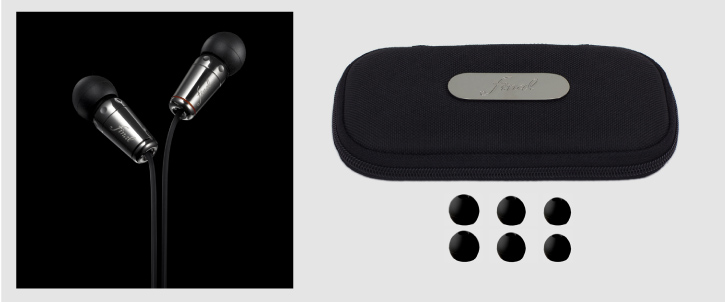Final Audio Design‘s new mid-price range is topped with the Final Audio Design Adagio V, a sleek looking and robust in-ear monitor which is designed to be worn down (perhaps earoded?) as opposed to worn over the ear. The driver housings themselves are relatively weighty and feel as though they are likely to fall out of the ears, but when in position this fear is short lived.
I always considered that a shiny barrel of metal going into my ear would lead to trouble, but maybe I’ve watched too many Mafia films. The Italian name Adagio certainly helps to conjure up the picture of a whacking, but the price doesn’t look too much like extortion.
The cable feels like a bit of a mismatch; as while it would not look out of place on other IEMs, the extra weight of the driver housings make it seem a little weedy. The lack of strain relif is a concern too, but I’m thinking that there’s likely some form of reinforcement within the housing. The weight of the Adagio V’s drivers would make it very tempting to use as a bola; fortunately there’s no shortage of people running away from me so I’ll be trying this soon.
When I had figured out the correct sized tip for my ears (which are smaller than average) the drivers sat in the ears happily enough, but I did look a little like my mother had an affair with a soda syphon.
Sound-wise, the Adagio V is forward in the midrange and I find myself tempted to lose a couple of dB in the 2-5k region; this is more a reflection of my own tastes and I feel that a lot of equipment aimed at the audiophile has a similar sound signature. The bass is there and extends very low, but there is no accentuation or bloating, if anything it is understated (again, my tastes are speaking here).
The soundstage is impressive, and it can sometimes really feel as if the sound is emanating from without, with some good instrument separation.
There is plenty of air, and a little play with an EQ shows a lot of response in the 14kHz region where a lot of earphones give very little difference. This is definitely an earphone for those who like detail over bass.
